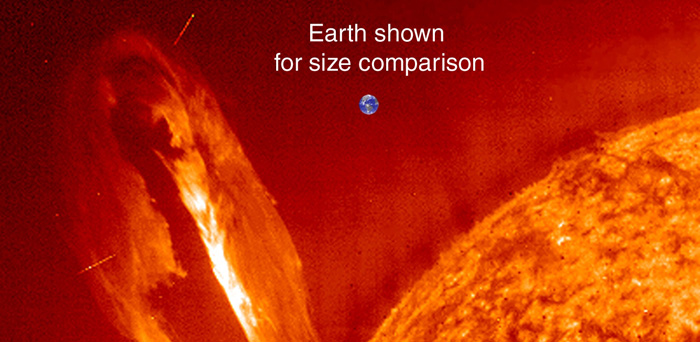 To put it simply, the Sun is as big as more than 1 million Earth masses put together. It is 1,287,000 times bigger than a solitary Earth. The Sun has a diameter of 1,392,000 km (865,000 miles) while the Earth’s diameter is only 12,742 km (7,918 miles). In terms of weight, the Sun is 333,000 times heavier than the Earth and accounts for 98% of all mass in the solar system. Following are some other fun and interesting facts about the Sun.
To put it simply, the Sun is as big as more than 1 million Earth masses put together. It is 1,287,000 times bigger than a solitary Earth. The Sun has a diameter of 1,392,000 km (865,000 miles) while the Earth’s diameter is only 12,742 km (7,918 miles). In terms of weight, the Sun is 333,000 times heavier than the Earth and accounts for 98% of all mass in the solar system. Following are some other fun and interesting facts about the Sun.
Temperature – The Sun’s surface is known as the photosphere and has a temperature of about 10,000 degrees Fahrenheit. At the core of the sun, temperature can be as high as 27 million degrees. The surface of the Sun features dark spots that are called sunspots. These are the cooler regions of the Sun.
Distance from the Earth – 93,000,000 miles is the approximate distance from the Sun to the Earth. To cover the distance and reach Earth, sunlight travels for 8.3 minutes. The Earth comes nearest to the Sun during winter in the northern hemisphere.
Composition – 92% of the Sun is made of hydrogen while the helium at the center of the Sun accounts for 7%. Various other gases make up for the rest. Every second, the Sun burns over 7 million tons of gas. All substances produced by the Sun are invisible.
Other Fun Facts About the Star of the Solar System
- The Sun is a star. It is just one of the zillions of stars in the galaxy.
- Many other stars are bigger and brighter than the Sun which is just of medium size and with average brightness.
- The corona is the outermost layer of the Sun and stretches millions of miles into outer space.
- One complete solar rotation takes 27.4 days.
- Every second, the Sun converts around four million tons of hydrogen into energy.
